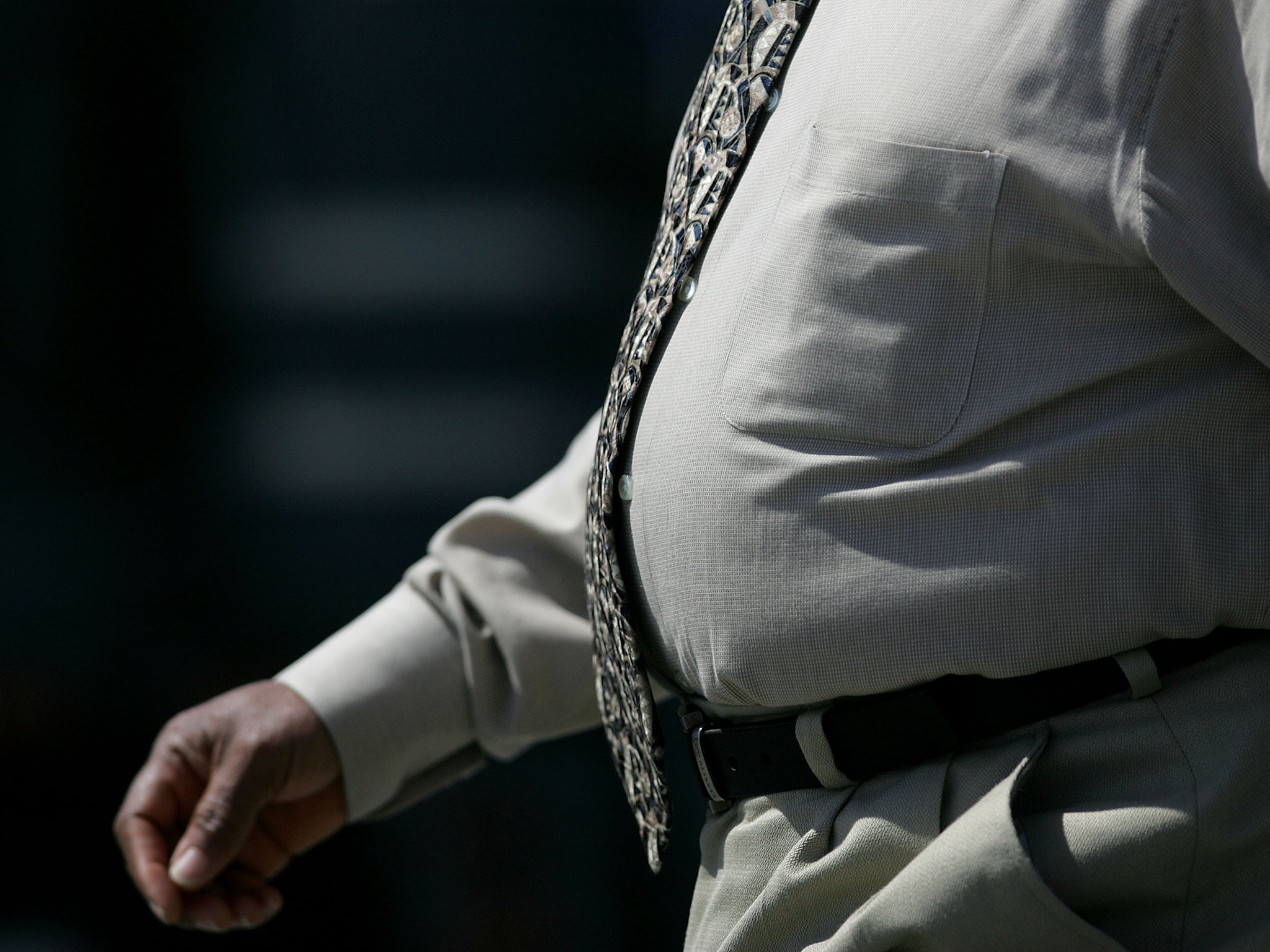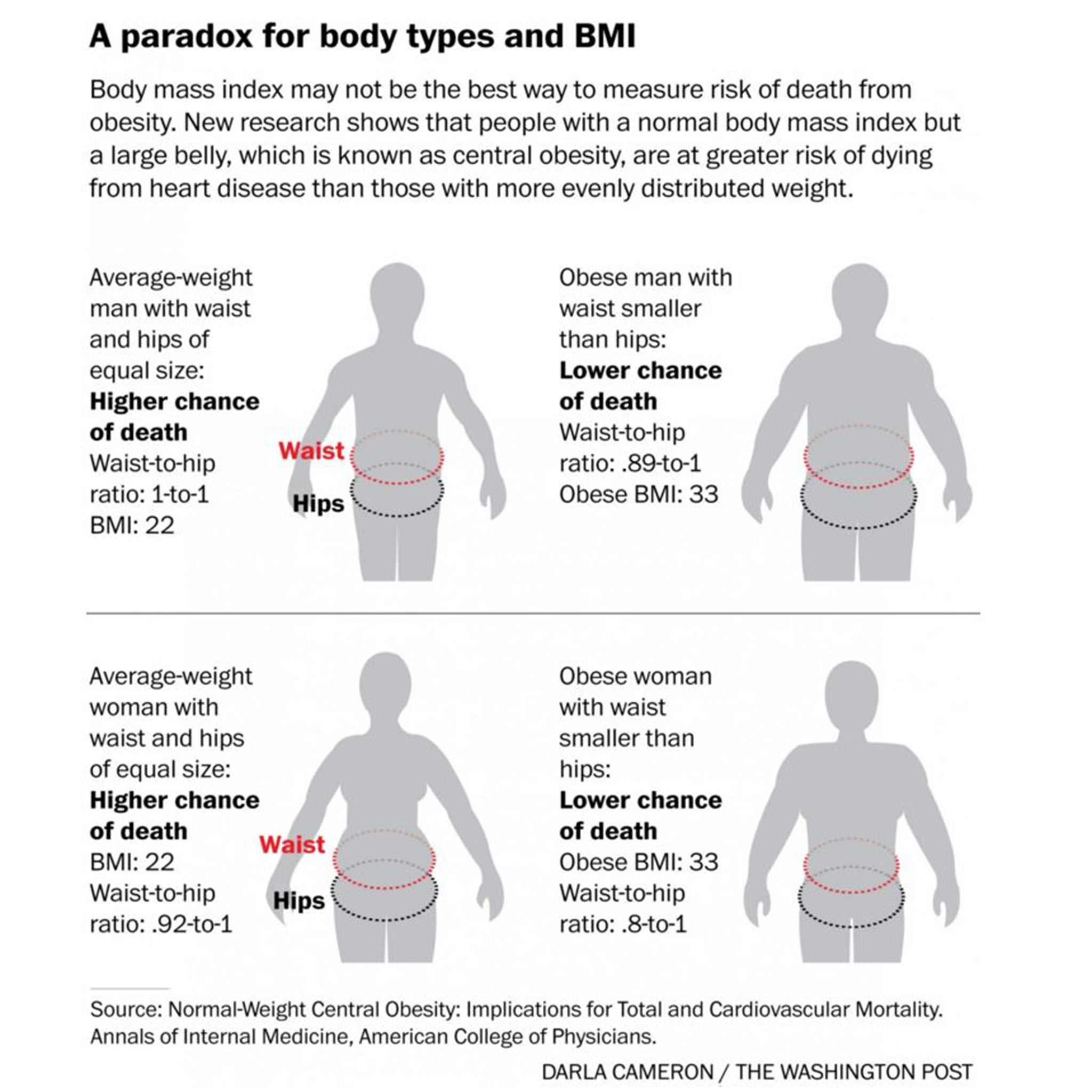How a piece of string can tell you whether you're too fat
Study finds someone with a normal BMI can sometimes have a greater risk of heart disease than an obese person

Your support helps us to tell the story
From reproductive rights to climate change to Big Tech, The Independent is on the ground when the story is developing. Whether it's investigating the financials of Elon Musk's pro-Trump PAC or producing our latest documentary, 'The A Word', which shines a light on the American women fighting for reproductive rights, we know how important it is to parse out the facts from the messaging.
At such a critical moment in US history, we need reporters on the ground. Your donation allows us to keep sending journalists to speak to both sides of the story.
The Independent is trusted by Americans across the entire political spectrum. And unlike many other quality news outlets, we choose not to lock Americans out of our reporting and analysis with paywalls. We believe quality journalism should be available to everyone, paid for by those who can afford it.
Your support makes all the difference.Everybody knows that having a a bit of belly -- or more -- could be bad for your health, but is that always true? According to new research, one way to answer that question is pretty simply: measure the broadest part of your waist and hips with a piece of string.
“If it takes more string to measure waist than hips that’s bad, and it relates to a higher rate of death,” said Francisco Lopez-Jimenez, a Mayo Clinic researcher and lead author on a study exploring the relationship between body mass index and weight distribution.
The study found that people with a normal body mass index but an apple-shaped torso (sometimes known as a dad bod) are at greater risk of dying from heart disease than an obese person with more evenly distributed weight.
For both men and women, the hips should have a longer circumference around the largest part of the buttocks, compared to the abdomen. A healthy ratio of belly-to-hips in women is .85-to-1, and for men the ideal ratio is .9-to-1. Lopez-Jimenez said any ratio greater than 1-to-1 is cause for concern.
It's well-known that BMI, based on a formula that takes into account height and weight but not muscle mass or overall level of fitness, has its limitations. But this new way of thinking -- and measuring -- health is another useful metric for people to use in determining whether a little extra girth is really that bad. Or whether you're actually a normal weight for your height, but have the kind of extra abdominal fat that poses higher health risks.
The following diagram shows a few of the different kinds of body shapes and what they mean for your health. The first kind--an average of a normal weight but with a bit of belly--is one of the deceptively perilous body shapes. Meanwhile, men with a high BMI but a low waist-to-hip ratio are often doing just fine. Think athletes.
A woman with a low BMI but a large stomach relative to her hips is at higher risk for health problems, while a woman with a high BMI but relatively small waist may be fine.

“The measurement is so simple that I personally believe people should feel empowered to measure themselves, like they weigh themselves,” Lopez-Jimenez said. "You can't get simpler than that."
If your measurements are out of sync, don't despair: Lopez-Jimenez said a diet low in refined carbohydrates may help. Strength training and aerobic exercise are also key: “The very first fat that we burn after engaging in a good exercise program is actually abdominal fat."
He also cautions that people with abdominal obesity shouldn't try to increase their BMI on purpose. Some athletes have a high BMI — anything above 30 is generally a sign of obesity — but a healthy hip-to-waist ratio, because muscle weighs more than fat.
© Washington Post
Join our commenting forum
Join thought-provoking conversations, follow other Independent readers and see their replies
Comments